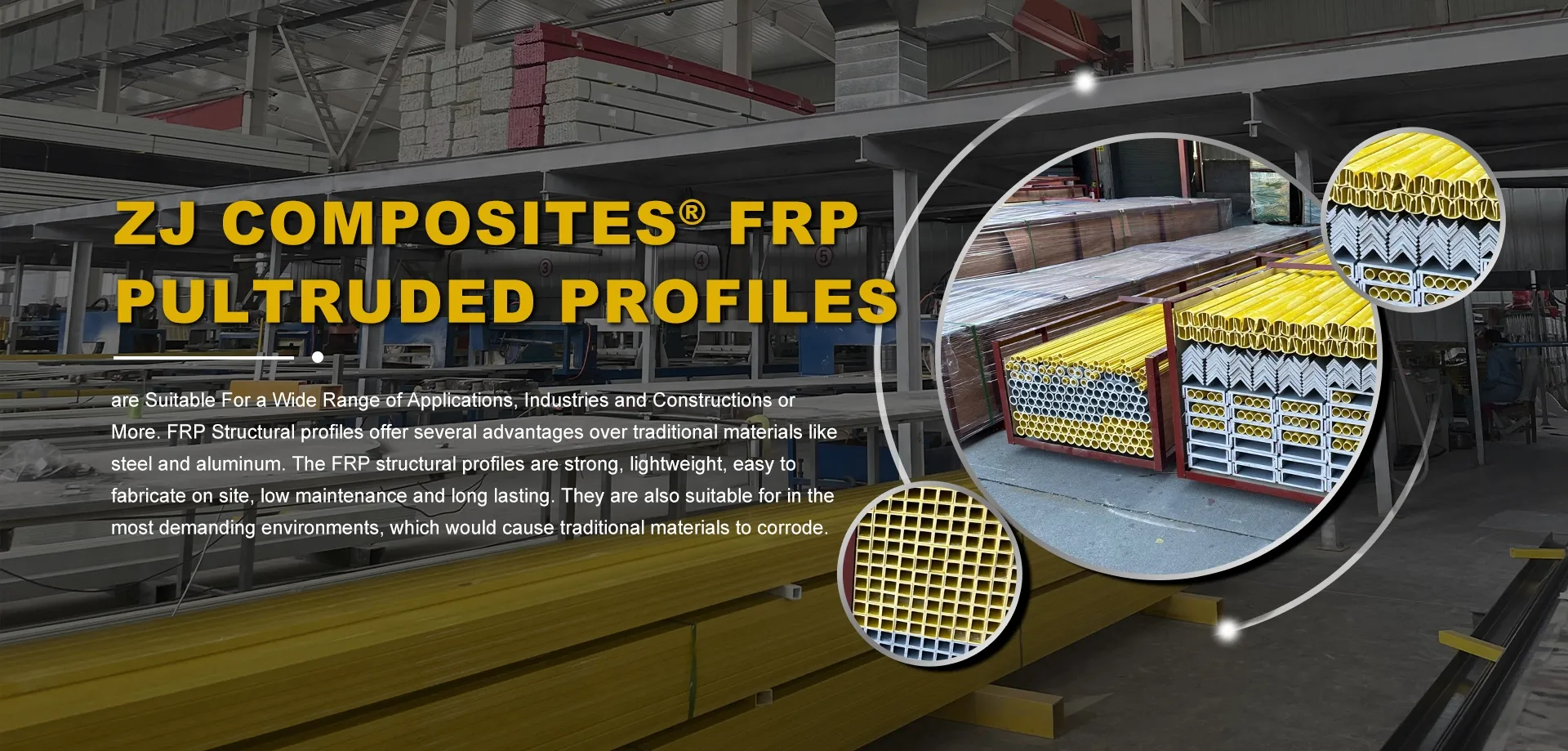loading...
- No. 9, Xingyuan South Street, Dongwaihuan Road, Zaoqiang County, Hengshui, Hebei, China
- admin@zjcomposites.com
- +86 15097380338
- Welcome to visit our website!
frp bars in concrete
The Role of FRP Bars in Concrete Structures
Fiber Reinforced Polymer (FRP) bars are increasingly being recognized as a revolutionary alternative to traditional steel reinforcement in concrete structures. Made from high-strength fibers such as carbon, glass, or aramid embedded in a polymer matrix, FRP bars offer numerous advantages, particularly in terms of strength, weight, and durability. This article explores the characteristics, benefits, and applications of FRP bars in concrete reinforcement, illuminating their growing significance in modern construction.
One of the primary advantages of FRP bars is their high strength-to-weight ratio. Compared to steel, FRP bars are significantly lighter, making them easier to handle and install. This reduced weight does not compromise their strength; in fact, many FRP bars exhibit tensile strengths that surpass those of conventional steel reinforcement. This attribute is particularly beneficial in constructions where reduced dead loads can lead to savings in overall structural costs and materials.
The Role of FRP Bars in Concrete Structures
FRP bars also offer excellent fatigue resistance. Concrete structures often deal with cyclical loading, which can lead to fatigue failures in traditional reinforcements. However, because of their inherent properties, FRP bars maintain their structural integrity even under repetitive stress, which enhances the longevity of concrete elements and reduces the frequency of maintenance.
frp bars in concrete

One significant application of FRP bars is found in the construction of bridges. Many existing bridges are aging and require repair and retrofitting to meet modern safety standards. The use of FRP bars in such cases not only enhances the structural capacity of the bridge but also extends its lifespan without adding significant weight. These bars can be incorporated into existing structures as well, allowing for effective strengthening without extensive modifications.
Moreover, FRP bars are being increasingly used in seismic retrofitting. The flexibility and lightweight nature of these bars allow for the design of structures that can withstand seismic forces better than traditional methods. By combining concrete with FRP reinforcement, engineers can develop structures that are more resilient to earthquakes, thereby improving safety and reducing potential damage.
Additionally, the versatility of FRP bars extends to various concrete applications. They can be used in residential buildings, tunnels, parking garages, and precast elements. Their adaptability to diverse construction contexts demonstrates their potential to optimize design and engineering processes.
Despite the numerous benefits, there are challenges and considerations in the adoption of FRP bars. The initial cost of FRP materials can be higher than steel, although this is often offset by the long-term savings associated with reduced maintenance and enhanced durability. Furthermore, the installation of FRP bars requires specialized knowledge to ensure proper bonding with concrete, which may necessitate additional training for construction personnel.
In conclusion, FRP bars represent a significant advancement in concrete reinforcement technology. Their unique properties, including lightweight construction, corrosion resistance, and superior longevity, offer compelling advantages over traditional steel reinforcement. With the rising demand for sustainable and durable construction solutions, FRP bars are poised to play an increasingly vital role in the future of civil engineering and infrastructure development. As research and technology continue to advance, the potential applications and benefits of FRP bars in concrete structures will undoubtedly expand, paving the way for more efficient and resilient construction practices.
-
Why Choose a Galvanized Water Tank for Your Storage NeedsNewsMay.21,2025
-
The Strength and Durability of FRP GratingNewsMay.21,2025
-
The Importance of Water Treatment Systems for Clean and Safe WaterNewsMay.21,2025
-
The Advantages of FRP Rebar for Construction ProjectsNewsMay.21,2025
-
Say Goodbye to Hard Water with a Reliable Water SoftenerNewsMay.21,2025
-
Maximize Your Water Storage with a Sectional Water TankNewsMay.21,2025
-
The Power of Filter VesselsNewsMay.19,2025
